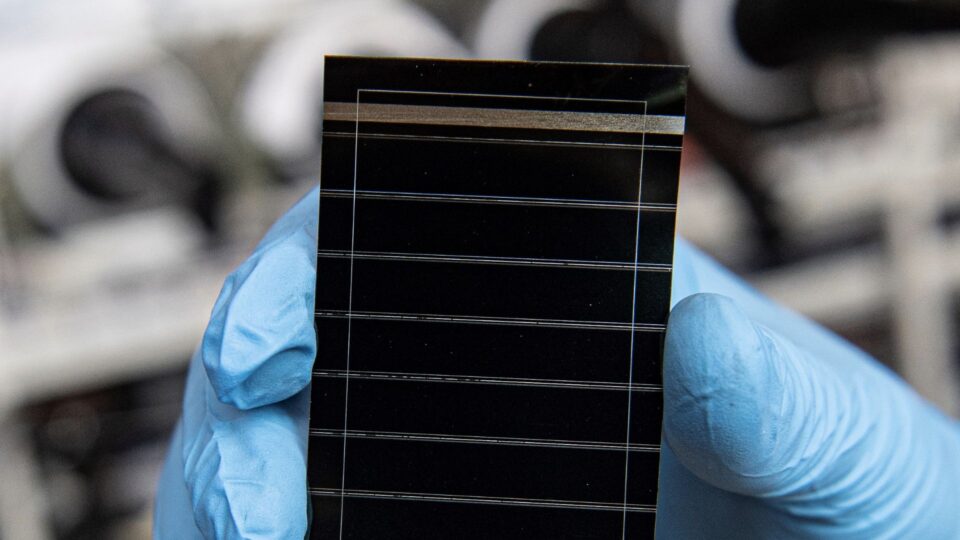Scientists have developed a new type of perovskite solar cell (PSC) that can withstand high-temperature encapsulation processes. The PSC demonstrates remarkable resilience even in high heat conditions with the help of an innovative protective film.
With the initial efficiency of 25.56%, the solar cell retained 85% of its efficiency despite operating for upto 1,000 hours under conditions of 185°F (85°C) and 85% relative humidity.
Developed by researchers from UNIST Graduate School of Carbon Neutrality, in collaboration with Gyeongsang National University (GNU), the PSC replaces the conventional additive 4-tert-butylpyridine (tBP) with ethylene carbonate (EC) in the composition of the PSCs.
High efficiency
Researchers also revealed that while tBP improves efficiency, it significantly lowers the glass transition temperature (Tg) of the hole transport layer to below 80°C, compromising the stability of the cell in high-temperature environments. Reports highlighted that the The glass transition represents the point at which the hole transport layer becomes nearly liquid.
Published in the journal Energy & Environmental Science, the research reveals that in scaled-up applications, perovskite solar mini-modules with aperture areas of 25 and 100 cm2 demonstrated PCEs of 23.22% and 22.14%, respectively.
“The elevated glass transition temperature and robustly sequestered Li+ ions endow the devices with resilience against damp-heat conditions (85 °C/85% RH) for 1000 hours. Our findings signify a crucial leap towards commercialization by addressing thermal stability issues,” said researchers in the study.
The resulting cell produced a power conversion efficiency (PCE) of 25.56%—the highest among tBP-free solar cells.
Efficiency remained virtually unchanged after encapsulation process
The efficiency remained virtually unchanged after undergoing the encapsulation process. In tests conducted under international standards at 85°C and 85% relative humidity, the encapsulated cells exhibited exceptional durability, maintaining 21.7% efficiency even after 1,000 hours. The glass transition temperature of the hole transport layer was also elevated to 125°C, reported Tech Explorer.
Perovskites — a family of materials that have shown potential for high performance and low production costs in solar cells — are materials utilized in other energy technologies, such as fuel cells and catalysts.
Commonly used in photovoltaic (PV) solar cells, perovskites are commonly used in photovoltaic (PV) solar cells are more specifically called “metal-halide perovskites” since they are made of a combination of organic ions, metals, and halogens.
These cells have shown remarkable progress in recent years with rapid increases in efficiency, from reports of about 3% in 2009 to over 26% today on small-area devices (about 0.1 cm2).
While reports revealed that perovskite-silicon tandem cells have reached efficiencies of almost 34%.
Stability in high-temperature
However, perovskite PV is not yet manufactured at scale as a number of challenges are required to be addressed before perovskites can become a competitive commercial PV technology.
“Through this latest research, we have developed a hole transport layer system that retains high efficiency while ensuring stability in high-temperature and high-humidity environments,” said Professor Dong Suk Kim, who led the study.
“This represents a significant step toward the practical application of perovskite solar cells.”
